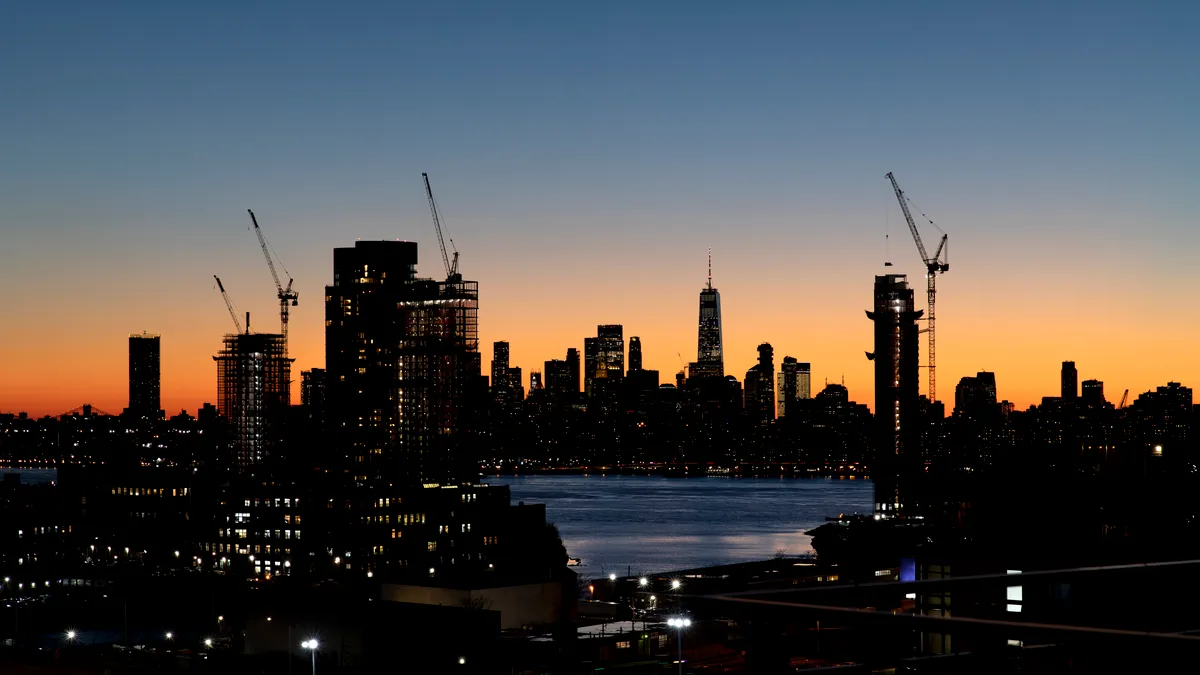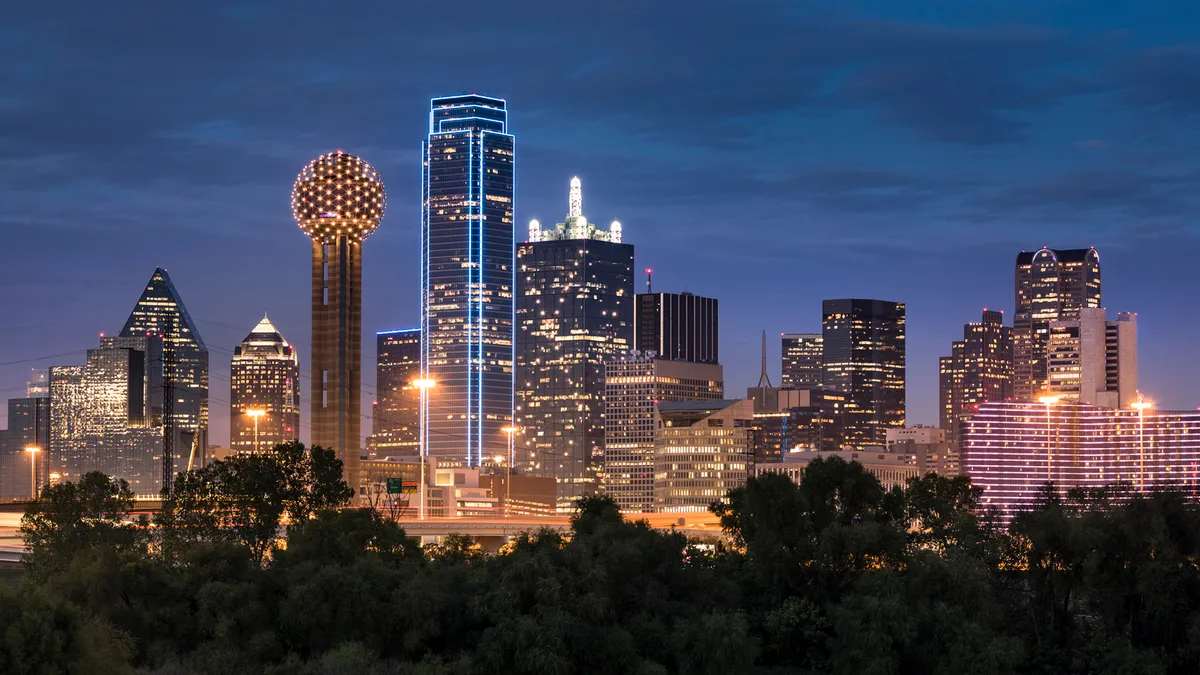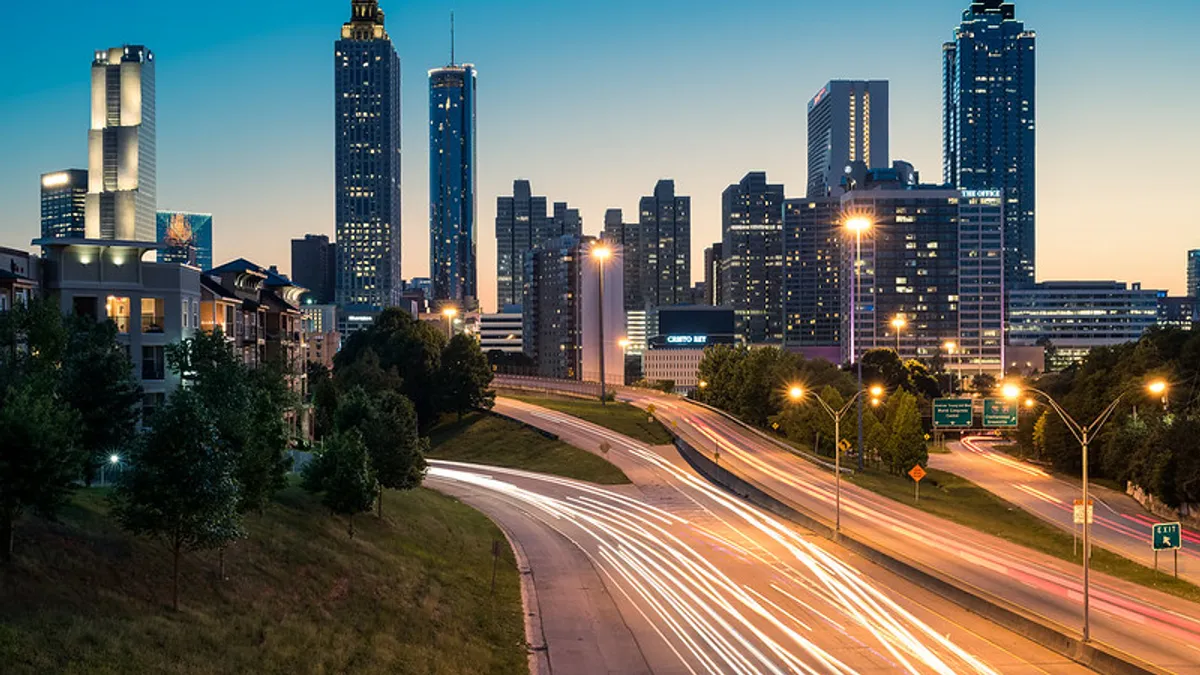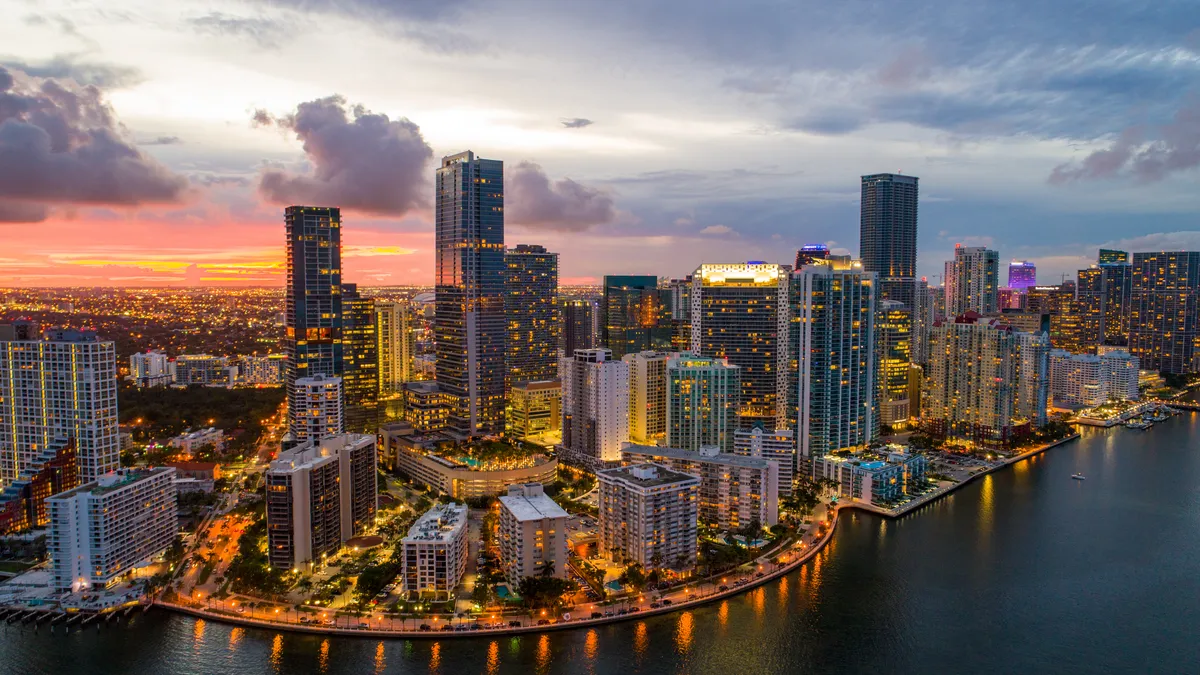When the pandemic struck, tourism to urban centers took the biggest hit. Travelers didn’t want to be anywhere crowded — and that especially included Manhattan, one of the most densely populated areas in the country.
It follows that when pandemic restrictions began to ease, once-crowded cities were the slowest travel markets to recover.
“It was the Lake Tahoes and the Myrtle Beaches of the world that were doing really well,” Warren Marr, hospitality and leisure managing director at PwC US, told Hotel Dive about the hospitality industry’s early recovery.
As the Omicron variant began to ease in 2022, Marr said, New York City tourism experienced a massive surge. 2023, though, has been the year of moving from initial recovery to normalization.
As New York has reemerged as a popular travel destination — and has seen a good deal of hotel activity to match — it’s not the same market it was in 2019. Industry analysts spoke to Hotel Dive about the city’s unusual “rate-driven recovery,” as well as how group travel is playing an important role in hotel performance.
A strong recovery
In the first half of this year, the Manhattan lodging market saw year-over-year RevPAR growth of 23.6%, according to PwC’s Manhattan Lodging Index for Q2, which Marr authored. In Q2 2023, Manhattan market occupancy was 83.9%, up 3.6% from the same quarter in 2022, and Manhattan ADR was $328.28, up 7.4% year-on-year.
“The New York City hotel market is in the midst of a robust recovery, led by strong ADR growth,” said Kevin Davis, Americas CEO of JLL’s Hotels & Hospitality Group. As of August 2023, city-wide ADR was $267, surpassing the prior 2008 peak.
“Said another way, the post-COVID hotel recovery was a rate-led recovery, which is atypical,” he added. Historically, Davis explained, the NYC hotel market would lower rates in order to maintain high occupancy — whereas now, owners are raising rates “aggressively” at occupancy’s expense.
The strategy appears to be working for hoteliers, with the city seeing an influx of travelers regardless of rate hikes. In 2022, New York City welcomed 56.7 million visitors, up from 32.9 million in 2021, and that number is expected to hit 63.3 million in 2023, according to data released in March by NYC Tourism + Conventions. The organization expects tourist numbers will surpass 2019 levels in 2024.
And international travel, in particular, is expected to boost leisure travel volume, with both Davis and Marr pointing to the recent easing of travel restrictions in China as something that could bring more visitors to the city.
What’s more, a growing number of travelers are coming in groups, which is good news for hotels. From the first to the second quarter of this year, NYC has experienced a 5.2% increase in group demand, nearing pre-COVID demand, meaning Q2 is 98.8% recovered from 2019 levels, Davis shared.
Marr described rising group demand as “an important leg of the stool” when it comes to the NYC hotel market’s performance. While return-to-office mandates have helped boost interest in Manhattan hotels as business travelers visit corporate hubs that are operational again, even those workplaces that operate remotely are contributing to hotel demand.
“If people are in the office less than they were [before the pandemic], sometimes companies are saying, ‘Look, we need to get the teams together’ more often,” he said. “So group business and meetings have increased, and also, city-wide conventions have improved significantly this year.”
Ongoing challenges
While favorable hotel performance makes the NYC hotel market appealing to investors, Davis said “it is far less attractive to developers,” due to construction costs that are “1.5 to 2 times higher than where many existing hotels are trading.”
Davis also pointed to recent zoning changes that have made construction more challenging “for all but the most skilled and well-capitalized developers.”
Though the city has seen a flurry of hotel openings in recent months, particularly in Times Square, Marr cautioned against reading too much into recent development successes. Hotels that have opened recently, for the most part, were financed prior to recent increases in debt cost.
And while many hotels have opened, many have closed, too — enough that overall supply of hotel rooms decreased this year, Marr said, noting the closures of the formerly successful Hudson Hotel and Stewart Hotel.
“These are hotels that are gone,” Marr said. “They're not closing temporarily. They're done.”
Nevertheless, for many hotel companies, the challenges are worth it.
“[New York City] is the financial capital of the world,” Marr said. “From a brand perspective, you need to have a beachhead in New York if you're going to be saying you're a true full-service global brand. That's not going to change, regardless of the short-term financial climate.”















